INTRODUCTION
The key element for Year 3 students is to perform advanced search, writing skills and citation management skills at the end of their course of study. Year 3 students will experience these skills during their course of study through a variety of TBL exercises (group learning), self-directed learning and attending optional information literacy organised for you. See figure 1
Fig 1: Year 3 Key Elements, Research & Library Skills, Medical Library ©
Global Information Literacy Standards
Information Literacy is important throughout the world and many interesting programs are being developed. Here are a few links on information literacy standards and definitions.
-
ACRL – Information Literacy Competency Standards for Higher Education
-
The SCONUL Seven Pillars of Information Literacy for Higher Education: Core Model
-
IFLA: International Federation of Library Associations Information Literacy Section
Students are encouraged to engage their medical librarians if they require further guidance or wish to have training. Simply, drop us an e-mail at medlib@ntu.edu.sg or contact us at 6592 1990.
ACTIVITY 1: Let us know your research needs better
Complete this survey questionnaire developed for Year 3 students. Your feedback will help us evaluate and understand your research needs.
RESOURCES TO GET YOU STARTED!
- Medical Library Survival Guide (Here is a list of ten tips to get you started and going!)
- Research information evaluation tools: radar-test checklist and AACODS Technique (See below Student Consultation Session page)
- Grey Literature sources
- Click User Guide_Year 3_Info Lit & Writing Skills-294dfjj for PDF version of this page
INTEGRATING LIBRARY & RESEARCH SKILLS WITH MBBS CURRICULUM
Your medical library guides you to acquire basic information literacy and writing skills using examples of case scenarios from your Year 3 textbooks (Refer to Year 3 e-books from our Pinterest webpage).
The medical library aims to integrate advanced research and writing skills using selected topics presented in LKC Year 3 MBBS curriculum. Your librarians want to guide you to:
- enhance your information literacy and writing skills
- incorporate clinical reasoning skills to interprete your clinical findings using either long or short cases
In this way, you will be able to approach case scenarios confidently during simulation learning exercises (e.g.: OSCE) or clinical examinations (written paper).
Year 3: Core Clinical Medicine in Practice
Fig 2: Curriculum integration with research and library skills (Adapted from: LKC Medicine Curriculum MBBS, Year 3)
SEARCH STRATEGY CYCLE FOR AN EFFECTIVE LITERATURE REVIEW
Here’s the search strategy cycle you need to refer to when performing a literature review for your research question/ case scenarios. See Fig 3 for more information.
Fig 3: Search Strategy Cycle for Literature Review, Medical Library ©
There are accompanying descriptors for students to understand each stage better. Refer to activities 2, 3, 4 and 5 to understand the use of this framework. A variety of case scenarios are given such as:
- OCSE long case (Abdominal station),
- Paediatric Medicine (Cardiovascular system)
- Patient safety and Medical ethics
Additionally, students will be guided on how to attempt a systematic review search.
Questions are posed and accompanied with librarian tips for students to experience advanced search skills, writing skills and citation management skills from these activities.
TEST YOUR SEARCH SKILLS. GIVE THESE EXERCISES A TRY!
Activity 2: OSCE LONG CASE (Abdominal Station)
Adapted from: Walker, B, Walker, B, & Morgan, M 2013, The Long Case Osce : The Ultimate Guide For Medical Students, n.p.: London : Radcliffe Publishing, 2013
Present your findings…
(1) What is the likely diagnosis?
(2) How would you further investigate and manage this patient?
Librarian tips for activity 2:
- Use suitable medical databases to search for your answer. (Recommended ones: Medline-Ovid and PubMed)
- Search for answers that determine the causes of chronic liver disease, signs of portal hypertension and the type of blood tests you could do to assess the liver’s synthetic function
- You can list your answer in point form and incorporate the concept of clinical reasoning skills
ACTIVITY 3: Paediatric Medicine Case Study (Cardiovascular System)
A 15-year-old female undergoing a physical examination was found to have a loud heart diastolic murmur at the second intercostal space to the left side of the sternum. Explain the reason for the loud heart murmur associated with this girl's condition.
(a) Breakdown the case scenario into parts. Use your existing medical knowledge to connect your learning.
Librarian tips for part (a):
- A 15-year-old female undergoing a physical examination was found to have a loud heart diastolic murmur at the second intercostal space to the left side of the sternum
- Explain your findings
- Explain the reason for the loud heart murmur associated with this girl’s condition.
- Explain your findings
- Use your medical knowledge to connect your learning
(b) Use the PICOS method to formulate at least 2-3 clinical questions. (Refer to EBM step 1 for standard template and other related information)
Librarian tips for part (b):
Watch these short EBM videos conducted by Professor Paul Glasziou from the University of Oxford’s Centre for Evidence-Based Medicine (CEBM).
EBM video 1: Formation of PICO, PO and PO questions.
Source: [Evidence-Based-Education]. (2009, September 22). Evidence-Based Medicine in Practice – Appraisal of Clinical Trials #1. [Video File]. Retrieved from https://www.youtube.com/watch?v=QsIYwWwi_r4.
EBM video 2: Feasibility of introducing evidence-based techniques into normal medical practice.
Source: [Evidence-Based-Education]. (2009, September 17). Evidence-Based Medicine in Practice – Appraisal of Clinical Trials #2. [Video File]. Retrieved from https://www.youtube.com/watch?v=xLS1ng6D32Y&t=16s
- You need to formulate well-built questions using the PICOS method
- Your clinical questions are mapped according to? (Select the ones that apply)
- etiology/risk
- clinical manifestations of disease
- differential diagnosis
- prognosis
- therapy
- prevention
- experience and meaning
- improvement
- Select the type of study: How well a study limits potential bias is tied to its validity, and determines where it falls within a hierarchy of evidence.
- Refer to the Resources for Evidence-Based Practice: The 6S Pyramid from McMaster University, Health Sciences
- Meta-Analysis
- Systematic Review
- Randomized Controlled Trial
- Cohort Study
- Case Control Study
- Case series or Case Report
- Animal Research
- In Vitro/Lab Research
- Editorials, Letters, Opinions
- Refer to the Resources for Evidence-Based Practice: The 6S Pyramid from McMaster University, Health Sciences
- What are the search terms and alternative terms identified for your PICO question?
- State your inclusion and exclusion criteria
- Example: gender, age, year of publication
- What are the irrelevant terms you want to exclude in your search?
- What medical databases do you want to use to plan your search?
- Example: Medline – OVID, PubMed etc.
- TRIP Database for PICO
Additional help:
As for the PICO principle, here are recommended sites from top medical schools in the world
- PICO examples from University of Oxford
- EBM – Evidence Based Medicine from Harvard University
- Explanation of the 2011 OCEBM Levels of Evidence
(c) What are the MeSH terms identified for this topic?
Librarian tips for part (c):
- Refer to your PICO answers before performing MeSH search (Refer to part b)
- Review top 10 relevant articles identified from PubMed
(d) How do you conduct your search using suitable medical databases (e.g.: PubMed, Clinical Key and Web of Science)?
Librarian tips for part (d):
PubMed
- Click Advanced Search Builder to view the video tutorial
- Click PubMed Simple Subject Search: How It Works to view the video tutorial
- Click Retrieving Citations from a Journal Issue to view the video tutorial
- Use the sort by function, recent activity (Sort by most recent and relevance)
Clinical Key
- Click Clinical Key user guide
- Select search type (books or journal)
- Use the keyword (heart diastolic murmur and teenager.
- Select full text article (Teenage Heart Murmurs – Ronak J. Naik MD, DNB and Nishant C. Shah MD)
- Also search for Guidelines (Clinical)
Web of Science
- Click Search Tips
- Click Advanced Search
- Click Refine & Analyze Search Results
- Click How to do a Cited Reference Search?
- Click Journal Citation Reports: Impact Factor
- Click Exporting records
Example:
- Change to advanced search
- View field tags
- Use keyword TS=(heart* diastolic* murmur*) / TS=(female* teenager)
- Search by limits (English) and view search history
- Perform AND search
- Select article, ‘Left ventricular non-compaction in children and adolescents: Clinical features, treatment and follow-up’
What’s new in Web of Science?
Source: [Web of Science Training]. (2017, June 25).What’s New in Web of Science – June 2017. [Video File]. Retrieved from https://www.youtube.com/watch?v=_ZTqA-ASAls&t=20s
(e) Apart from searching for articles from medical databases, how do you search for Grey literature sources?
Librarian tips for part (e):
- Refer to the Student Consultation Sessions How do you search for Grey Literature?
Take your learning one step further!
ACTIVITY 4: Search for systematic reviews
When using:
(1) Medline – OVID (EBM Reviews – Cochrane Database of Systematic Reviews 2005 to November 23, 2016)
- For example: Type the search sentence – teenager and heart diastolic murmur
- Select the systematic review title: ‘Clinical characteristics of myxoma of the heart‘
- Read and review
(2) Cochrane Library and Cochrane Clinical Answers
- Watch Online self-paced tutorials on how to use Cochrane Library
- See ppt slides on how to use Cochrane Clinical Answers
Watch these videos from OvidWoltersKluwer on systematic reviews in EBHC.
Video 3: The Role of Systematic Reviews in Evidence-Based Healthcare (EBHC)
Source: [OvidWoltersKluwer]. (2015, October 6). The Role of Systematic Reviews in Evidence-Based Healthcare. [Video File]. Retrieved from https://www.youtube.com/watch?v=vhitDGfO8qU
Video 4: Step 1 in a Systematic Review
Source: [OvidWoltersKluwer]. (2015, October 6). Step 1 in a Systematic Review. [Video File]. Retrieved from https://www.youtube.com/watch?v=lfO5yB9EoJU
Video 5: Step 2 in a Systematic Review
Source: [OvidWoltersKluwer]. (2015, October 6). Step 2 in a Systematic Review. [Video File]. Retrieved from https://www.youtube.com/watch?v=Ky4bU94dZnY
Video 6: Step 3 in a Systematic Review
Source: [OvidWoltersKluwer]. (2015, October 6). Step 3 in a Systematic Review. [Video File]. Retrieved from https://www.youtube.com/watch?v=MEBal2QgH7c
(f) How many relevant articles did you retrieve? How do you report the use of systematic reviews?
Librarian tips for part (f):
- This is where you search for evidence
- Review Resources for Evidence-Based Practice: The 6S Pyramid (Source: McMaster University Health Sciences)
- For example: Your search terms are teenager AND heart diastolic murmur
- Use the 6S Pyramid and map your search results from selected databases
- When reporting the use of systematic reviews, the PRISMA flow diagram needs to completed. Use the PRISMA checklist as a reference. (At this level, you need to know the format and content input for PRISMA)
(g) How do you evaluate the quality of your article search?
Librarian tips for part (g):
- Locate at least 2 grey literature sources (e.g: MOH – Management of Asthma and RSV in infants). Use the AACODS technique to evaluate information.
- Refer to the Student Consultation Sessions page for Evaluations tools for Grey Literature
- Use the radar-test checklist to evaluate the quality of the articles obtained from your search.
- When using Web of Science, you need to analyse the journal impact factor and cited times. For example:
- Revisit the article, ‘‘Left ventricular non-compaction in children and adolescents: Clinical features, treatment and follow-up’
- Change to ‘Times Cited – Highest to lowest’
- View the times cited section and Analyse results
- Select Web of Science Categories
- Perform a combine search and view records
- View the journal impact factor (bottom of the page) and the year
- Use these critical appraisal worksheets for systematic reviews from:
(h) How do you write your answer using at least 5-7 selected articles? (Hint: Limit answer to less than 1000 words)
Librarian tips for part (h):
- Keep your interpretation of results simple, clear and factual to clinical findings.
- Check with your supervisor on accuracy of writing
BONUS CLIP! Avoiding Plagiarism: Writing With Integrity
Watch this video by Dr Candace Hastings from Texas A&M University on how to avoid plagiarism
Source: [tamuwritingcenter]. (2015, Feb 28). Avoiding Plagiarism: Writing With Integrity. [Video File]. Retrieved from https://www.youtube.com/watch?v=F1S1FZ-bn5E
Any other good writing tips?
- Barnard and Deborah St James are co-authors of Listen. Write. Present.: The Elements for Communicating Science and Technology (Yale University Press; 2012). (Source http://www.medicalpracticeinsider.com/news/4-questions-will-help-hone-your-writing-skills)
- Top 10 good attributes of a good medical writer by SIRO
(i) Use EndNote and list the citations in Vancouver style.
Librarian tips for part (i):
Read about citing and referencing: Vancouver styles: https://www.imperial.ac.uk/media/imperial-college/administration-and-support-services/library/public/vancouver.pdf
- View EndNote for (Mac)
- Use EndNote (Windows) in 7 minutes
Activity 5: Patient Safety and Medical Ethics (“I knew the damage was iatrogenic”)
I was a third year medical student on oncology rotation, when a classmate told me he and his intern had admitted an oncology patient for routine chemotherapy. The patient was to be hydrated overnight and receive chemotherapy in the morning. In preparation the preceding evening, the order was written to give the patient 300cc of normal saline per hour and the student dutifully inserted the line into the reservoir situated beneath the skin the patient's chest. Subsequently, my classmate discovered the port in the patient's chest was part of an Omaya reservoir which had been placed in the patient’s brain and the 300cc was directed into his brain. I asked my colleague who he had told of the incident and he said ‘no one’. Since I now knew that any damage the patient suffered was iatrogenic, what was my responsibility in the matter? Should I check on the patient to determine if he had been harmed? Should I check to see if there was any notice on the chart? Should I inform the attending as to what happened?
(a) Perform an advanced search on patient safety, medical & professional ethics and preventing errors in healthcare.
(b) Include systematic reviews if necessary. Complete the PRISMA flow diagram. You can refer to the PRISMA checklist.
(c) Perform a critical literature appraisal on articles gathered. Save citations.
(d) Write your answer in less than 500 words.
Librarian tips for part (d):
- You can refer to recommended articles such as:
- Ommaya Reservoir Patient Education
- Totally Implantable Venous Access System (Medical Port)
- Seven-Step Pathway for Preventing Errors in Healthcare
BONUS CLIP! HOW DO YOU WRITE A GREAT RESEARCH PAPER?
Watch this video by Dr Simon Peyton Jones from University of Cambridge on how to write a great research paper (7 simple suggestions)
https://www.youtube.com/watch?v=g3dkRsTqdDA
Source: [S. R. S Iyengar]. (2013, May 18). How to Write a Great Research Paper. [Video File]. Retrieved from https://www.youtube.com/watch?v=g3dkRsTqdDA
BONUS CLIP! How do you calculate highly cited journals?
Watch this video on Journal Impact Factor metric – learn how it’s calculated, and how it’s used.
Source: [Web of Science Training]. (2017, June 23). Journal Citation Reports – Journal Impact Factor. [Video File]. Retrieved from https://www.youtube.com/watch?v=ulidYM0ap_A&feature=push-u&attr_tag=xvTpvjYkKUYNP42M-6
HIGHLY RECOMMENDED BOOKS IN NTU LIBRARY
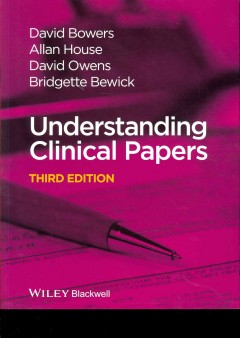 Understanding clinical papers / David Bowers, Allan House, David Owens & Bridgette Bewick. Publication Date: 2014
Understanding clinical papers / David Bowers, Allan House, David Owens & Bridgette Bewick. Publication Date: 2014
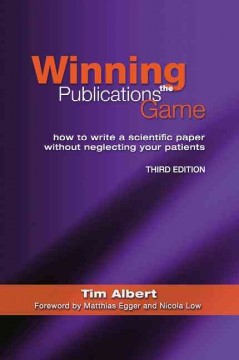 Winning the publications game : how to write a scientific paper without neglecting your patients / Tim Albert ; foreword by Matthias Egger and Nicola Low. Publication Date: 2009
Winning the publications game : how to write a scientific paper without neglecting your patients / Tim Albert ; foreword by Matthias Egger and Nicola Low. Publication Date: 2009
A primer on clinical experience in medicine [electronic resource] : reasoning, decision making, and communication in health sciences / Milos Jenicek. Publication Date: 2012
Clinical examination [electronic resource] / Owen Epstein … [et al.] Publication Date: 2008
The black book of clinical examination / Tey Hong Liang, Erle Chuen-Hian Lim, Jimmy W.K. Lim. Publication Date: 2009
Patient safety [electronic resource] : a human factors approach / Sidney Dekker. Publication Date: 2011
Clinical communication skills / edited by Peter Washer. Publication Date: 2009
Prepared by: Rebecca Lavanie David (Senior Assistant Manager, Medical Library)
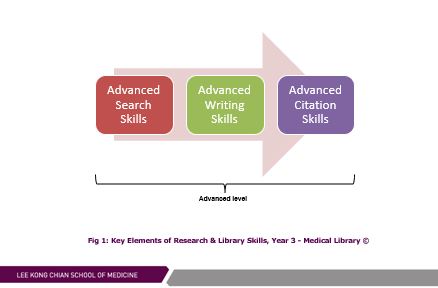
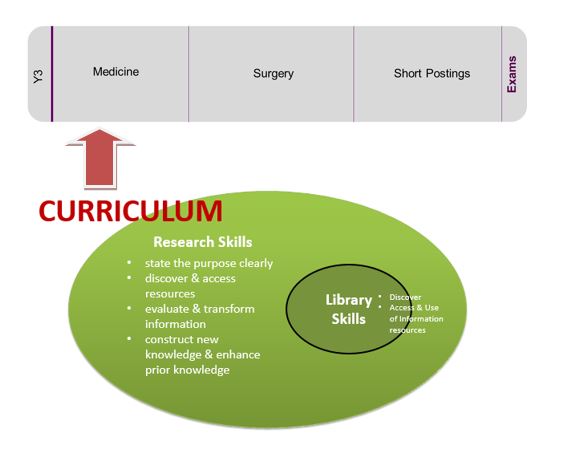
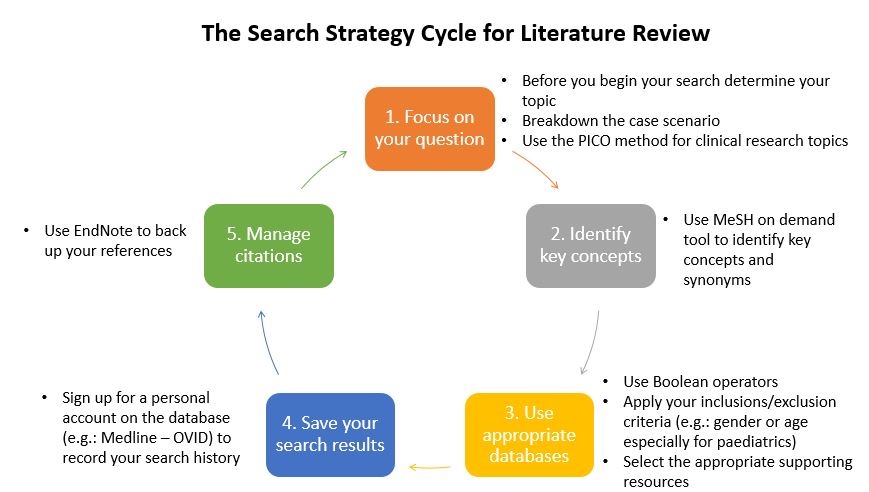

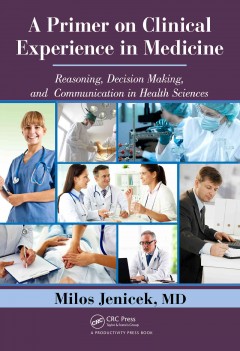
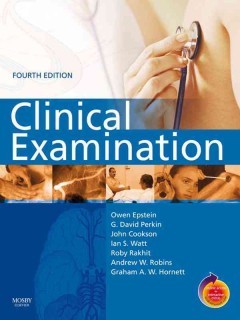



You must be logged in to post a comment.